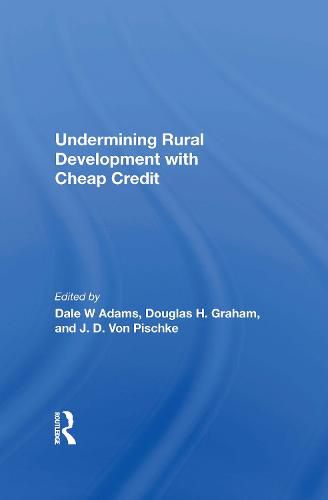Readings Newsletter
Become a Readings Member to make your shopping experience even easier.
Sign in or sign up for free!
You’re not far away from qualifying for FREE standard shipping within Australia
You’ve qualified for FREE standard shipping within Australia
The cart is loading…






Originally published in 1985, twenty-three chapters are brought together in 4 parts dealing with, respectively, problems in rural finance, interest rate policies, politics and finance, and new directions for rural financial markets. In an introduction it is argued that cheap and abundant credit is often regarded as essential for rural development but that actions taken on the basis of this assumption have given disappointing results. Low-interest policies and the improper use of financial markets are seen as the principal reasons for this. It is recommended that higher and more flexible interest rates are allowed and that little or no attention is given to target loans. Informal lenders are thought to offer valuable services therefore they should not be discouraged. More emphasis should be put on voluntary savings mobilization and access to formal loans by non-farm rural firms. It is concluded that many traditional agricultural credit programmes are counterproductive and that attractive product and input prices together with higher yields would be more powerful in stimulating agricultural development.
$9.00 standard shipping within Australia
FREE standard shipping within Australia for orders over $100.00
Express & International shipping calculated at checkout
Originally published in 1985, twenty-three chapters are brought together in 4 parts dealing with, respectively, problems in rural finance, interest rate policies, politics and finance, and new directions for rural financial markets. In an introduction it is argued that cheap and abundant credit is often regarded as essential for rural development but that actions taken on the basis of this assumption have given disappointing results. Low-interest policies and the improper use of financial markets are seen as the principal reasons for this. It is recommended that higher and more flexible interest rates are allowed and that little or no attention is given to target loans. Informal lenders are thought to offer valuable services therefore they should not be discouraged. More emphasis should be put on voluntary savings mobilization and access to formal loans by non-farm rural firms. It is concluded that many traditional agricultural credit programmes are counterproductive and that attractive product and input prices together with higher yields would be more powerful in stimulating agricultural development.